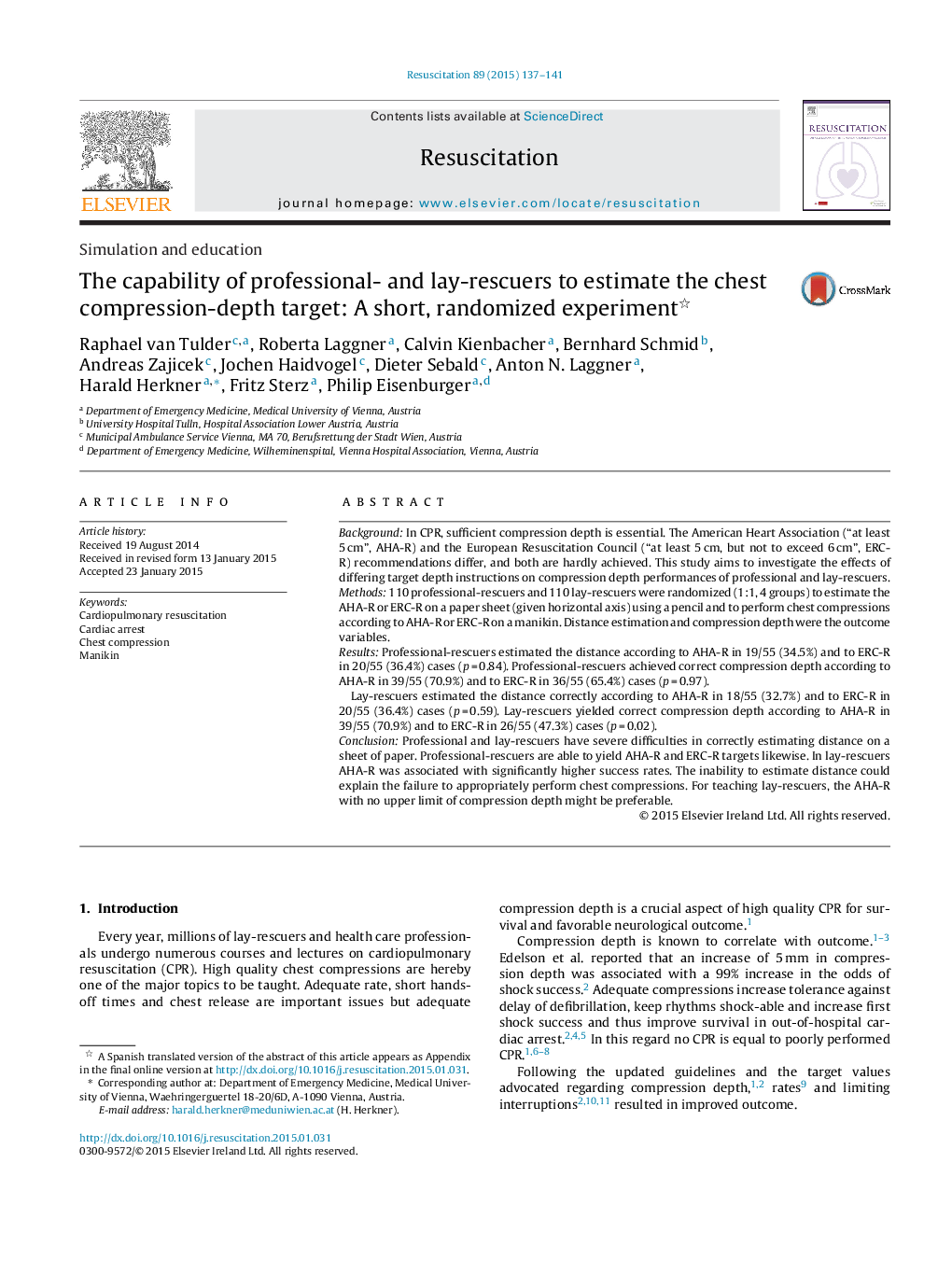| Article ID | Journal | Published Year | Pages | File Type |
|---|---|---|---|---|
| 5998001 | Resuscitation | 2015 | 5 Pages |
BackgroundIn CPR, sufficient compression depth is essential. The American Heart Association (“at least 5 cm”, AHA-R) and the European Resuscitation Council (“at least 5 cm, but not to exceed 6 cm”, ERC-R) recommendations differ, and both are hardly achieved. This study aims to investigate the effects of differing target depth instructions on compression depth performances of professional and lay-rescuers.Methods110 professional-rescuers and 110 lay-rescuers were randomized (1:1, 4 groups) to estimate the AHA-R or ERC-R on a paper sheet (given horizontal axis) using a pencil and to perform chest compressions according to AHA-R or ERC-R on a manikin. Distance estimation and compression depth were the outcome variables.ResultsProfessional-rescuers estimated the distance according to AHA-R in 19/55 (34.5%) and to ERC-R in 20/55 (36.4%) cases (p = 0.84). Professional-rescuers achieved correct compression depth according to AHA-R in 39/55 (70.9%) and to ERC-R in 36/55 (65.4%) cases (p = 0.97).Lay-rescuers estimated the distance correctly according to AHA-R in 18/55 (32.7%) and to ERC-R in 20/55 (36.4%) cases (p = 0.59). Lay-rescuers yielded correct compression depth according to AHA-R in 39/55 (70.9%) and to ERC-R in 26/55 (47.3%) cases (p = 0.02).ConclusionProfessional and lay-rescuers have severe difficulties in correctly estimating distance on a sheet of paper. Professional-rescuers are able to yield AHA-R and ERC-R targets likewise. In lay-rescuers AHA-R was associated with significantly higher success rates. The inability to estimate distance could explain the failure to appropriately perform chest compressions. For teaching lay-rescuers, the AHA-R with no upper limit of compression depth might be preferable.
